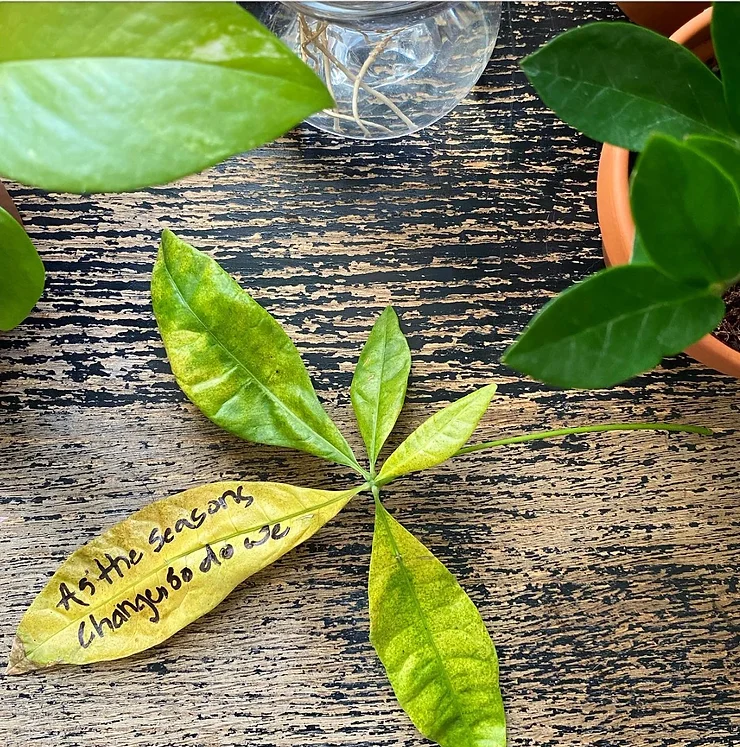Spring Maintenance
What to do when Spring has sprung.
Spring is in full swing, and while the flowers are blooming, the sun is blazing here in the south. Like us, plants come alive in the spring, with the longer and warmer days coaxing them from their winter hibernation. With the change in the season comes a change in the way you care for your plants, here are a few tips to prepare your houseplants for their spring awakening.

- Deep Clean
Now is the time to refamiliarize yourself with your plants. Inspect each plant’s leaves, soil, and pot. Look under the leaves and between petioles carefully inspecting for pests, mold, and fungus.
Gently wipe each leaf and stem with a terrycloth or cotton towel/shirt dampened with mildly soapy water. We use a few drops of dishwashing liquid and a dash of apple cider or white vinegar for a shine that still lets your plants breathe.
Once you have assessed that your plant is healthy, gently pull your plant out of its pot and inspect the soil and roots. Depleted soil will have a lighter color and feel brittle to the touch, nutrient-rich soil will have a deep brown/black color and a richer smell when wet. Roots should not take up more than 25% of the soil-to-root ratio; if the roots are suffocated this will affect the life of the plant and its growing capacity. If the plant is ready to be repotted do so now, if not closely inspect for root rot, root mealy bugs, or any form of movement or discoloration.
Now that you’ve been reacquainted with your housemates, drown them. No, really, submerge your entire plant in a bucket or sink with room temperature water and neem oil— an eighth of a cup to every gallon is sufficient, but your measurements don’t need to be exact.
Set your plants to dry and keep them out of direct sunlight for at least one day.
2. Environment Change
The longer days and hotter temperatures mean your plant is absorbing, and using, more energy. this profoundly affects the two basic needs of any plant, light and water.
Light
While your plant may have been loving the winter light pressed against a south-facing widow, the spring and summer sun may be too intense for its leaves.
To avoid sunburn, dry soil, and brown leaves, move the plant further away from the window. This gives you more places to use your plants decoratively as the prolonged and intense spring sun is more powerful than the darkness of winter.
Water
The plants use water based on the amount of light they receive. The more light, the more water.
In addition to the evaporating qualities of the sun, plants also take in more water as they use energy for leaf and flower growth. To avoid overwatering adjust the intake gradually and intuitively based on the dampness of the soil.
Temperature
- Here in the south, air conditioning is essential, but the relief we feel from the cool blast is detrimental to your plants. An ideal temperature for tropical, really most, houseplants is 65-85 degrees. So though your house may be at a balmy 74, plants in front of A/C vents will be much colder. If you can feel the air stream, it will harm your plant over a period of time.
3. Prune
- Cut. It. Back. Much like our own hair, we are reluctant to trim back months, or even years, of growth that our friends pushed out, but unlike the pixie cuts and bad dye jobs, change is good! Cut back any brown, yellow, or dried leaves, leggy stems, or long vines without leaves. **Pieces with viable nodes can be placed in water for propagation.
4. Fertilize
If you are repotting or planting your plant in fresh soil, skip this step. For housemates staying in their pot adding fertilizer can revive nutrient deficit soil. While plants make their own nutrients from photosynthesis, fertilizers act as vitamins that help your plant thrive.
Fertilizers aren’t necessary, but we add a capful of Superthrive liquid when we water once a month during the growing months.
Pro-tip: if you can smell the fertilizer in your water, it’s not diluted enough and you should add more water before watering your plants.
At the end of the day…
No matter the change, be it season, pot, or soil, interacting with and understanding your plant’s needs is the best way to ensure it thrives in your home!
